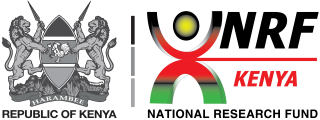Browsing by Author "Gichana, Zipporah"
Now showing 1 - 2 of 2
Results Per Page
Sort Options
Publication Effects of aerated and non-aerated biofilters on effluent water treatment from a small-scale recirculating aquaculture system for Nile tilapia (Oreochromis niloticus L.)(Journal of Land Management, Food and Environment, 2019-09-17) Gichana, Zipporah; Liti, David; Drexler, Silke-Silvia; Zollitsch, Werner; Meulenbroek, Paul; Wakibia, Joseph; Ogello, Erick; Akoll, Peter; Waidbacher, HerwigMost recirculation aquaculture systems (RAS) use aerated biofilters to maintain suitable water quality for fish production. However, application of non-aerated biofilters may provide opportunities to lower aeration costs, water usage and concentration of all nitrog- enous wastes in the effluent water. Our study aimed at comparing the biofiltration performance characteristics of two biofilters: a conventional aerated biofilter and a non-aerated biofilter receiving the same effluent water from a small-scale RAS. The two biofilters were evaluated in triplicate and tested concurrently for seven months. Water quality parameters were monitored at the biofilter inlets and outlets and in the fish tanks. At the beginning of the experiment, the concentration of ammonia at the two biofilter outlets were not significantly different. However, the concentrations decreased with time reaching mean values of 1.33 ± 0.02 mg L-1 and 1.23 ± 0.21 mg L-1 N-NH4 in the aerated and non-aerated biofilters, respectively. Whereas phosphorus and nitrate levels were significantly high in the aerated biofilter. There was no significant difference in the growth of fish between the aerated and non-aerated biofil- ters. The results suggest that non-aerated biofilters can be as effective as aerated biofilters in maintaining suitable water quality for O. niloticus production.Publication Spatial-temporal composition, abundance and diversity of algal communities in River Malewa of Lake Naivasha Ramsar Basin, Kenya(Integrity Research Journals, 2022-04-30) Obegi, Beatrice; Njiru, James; Getabu, Albert; Gichana, ZipporahABSTRACT: Algae and algal communities are potentially vulnerable to climate change and consequently can be depleted or be extinct hence the current debate on global biodiversity. Using a 30 µm phytoplankton net, triplicate samples were picked monthly from 10 stations in River Malewa from November 2020 to December 2021. A total of 360 samples were picked the whole study period. The study examined taxonomy, composition, abundance, diversity, and distribution. Counting and identification was done using Sedwick- rafter cell counting chamber with a Binocular compound microscope. Results indicated 89 species of phytoplankton were identified. 86 species were identified in the river while additional 3 more species were identified in the lake. Bacillariophyceae (Diatoms) dominated in lotic sites with 50%, Cyanophyceae was 17%, Chlorophyceae 16% and Myxophyceae was 6% while the least dominant was Euglenophyceae with 4%, Chrysophyceae (3%), Xanthophyceae, Rhodophyceae and Dinophyceae with 1% each. Two points at the lake showed a high dominance in Chlorophyceae with 63%, Xanthophyceae 21% and Chrysophyceae 14%, while Bacillariophyceae was 1% and the rest of the groups were 0%. The abundance showed RM1 and RM4 had abundance of 4.8 x 105 cells/mm3. Site RM9 and RM10 being lacustrine recorded highest abundance with 1.24 x 106 and 1.29 x 106 respectively. RM3 recorded abundance of 6.2 x 105 cells/mm3, RM3 was 7.3 x 105 cell/mm3 and RM5, RM6, RM7 and RM8 recorded abundance of 8.5 x 105, 9.2 x 105, 7.5 x 105 and 7.9 X 105 cell/mm3 respectively. High value of Shannon-Wiener's index (H ') was recorded in RM6 (1.556), followed by RM4 (1.521), RM7 (1.504), and lowest was RM 10 (1.141), RM5 (1.299), RM1 (1.398), RM3 (1.403), RM2(1.474) and RM8 (1.473). Management issues and effects of existing human pressures, such as damping, urbanization and nutrient enrichment on river ecosystems should be studied to fill gaps in knowledge on phytoplankton monitoring on rivers and streams.

